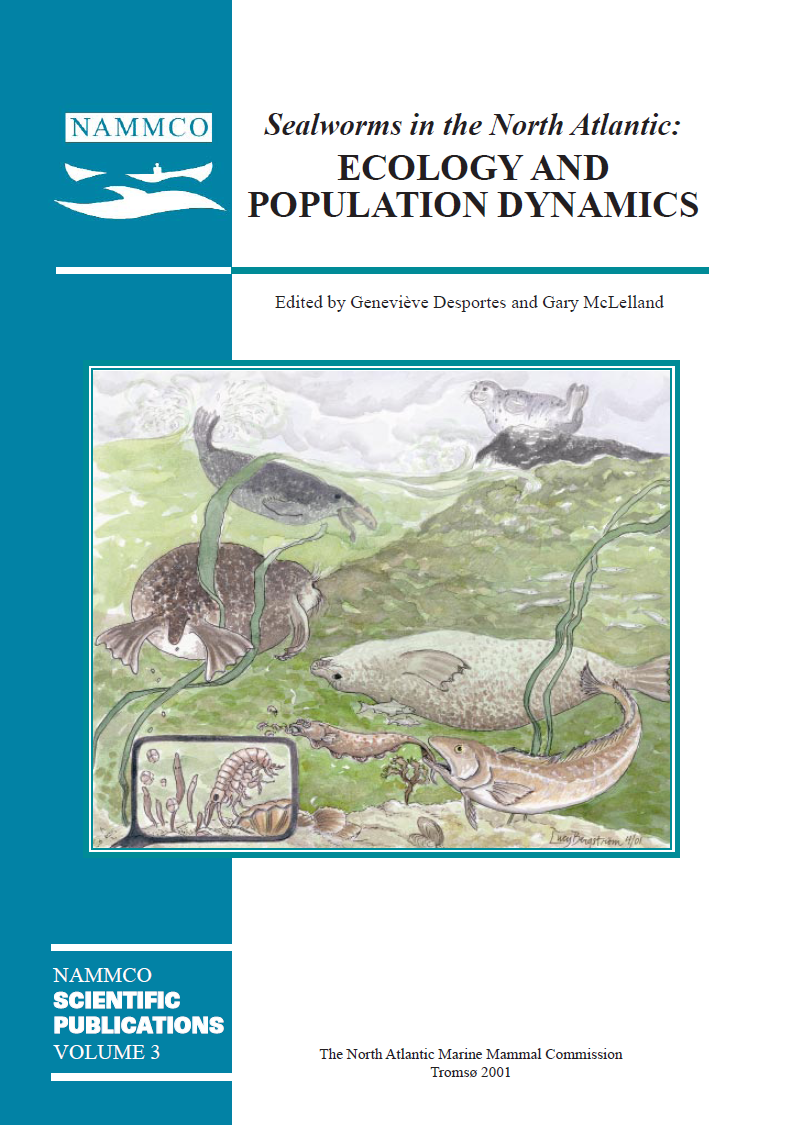Establishing the relative importance of sympatric definitive hosts in the transmission of the sealworm, Pseudoterranova decipiens: a host-community approach
DOI:
https://doi.org/10.7557/3.2965Keywords:
sealworms, Pseudoterranova decipiens, parasites, grey seals, Halichoerus grypus, harbour seals, Phoca vitulina, harp seals, Phoca groenlandica, hooded seal, Cystophora cristata, population dynamicsAbstract
The importance of a given host to a particular parasite can be determined according to three different criteria: host preference, host physiological suitability and host contribution to transmission. Most studies on the sealworm Pseudoterranova decipiens have focussed on the latter factor, but few attempts have been made to develop a quantitative transmission model evaluating the relative importance of each host. The purpose of this study was to propose a flow-chart model to study sealworm transmission within a seal community. The model was applied to hypothetical data of four seal species acting as definitive hosts of P. decipiens sensu stricto in eastern Canada: harp seal Phoca groenlandica, harbour seal P. vitulina, grey seal Halichoerus grypus and hooded seal Cystophora cristata. The dynamics of the model was studied using population estimates from 1990 to 1996. To illustrate the interrelationship of the seal populations in the flow dynamics, the model’s behaviour was explored by manipulation of the harp seal population size. The results showed that grey seals accounted by far for most transmission from and to the seals. The harbour seal population also sustained a biologically significant proportion of the flow, whereas the role of hooded and harp seals seemed negligible despite their large population sizes. The hypothetical removal of the harp seal population resulted in small increases in the relative flows to the other seals. These results conform to previous qualitative assessments on the relative importance of these seal species in sealworm transmission. The model provided some heuristic rules useful to understand transmission patterns. The data suggested that the harbour seal population should be about twice that of the grey seals to account for a larger share of transmission than grey seals. Although this is unlikely to occur at a large geographic scale, harbour seals outnumber grey seals in some areas and, therefore, the role of each host may change locally. To make this approach more realistic, further work should seek accurate estimates of parasite population parameters, better definition of the host community boundaries (at a local scale) and improved control of confounding variables.Downloads
Published
2001-11-24
How to Cite
Aznar, F. J., Balbuena, J. A., Fernández, M., & Raga, J. A. (2001). Establishing the relative importance of sympatric definitive hosts in the transmission of the sealworm, <i>Pseudoterranova decipiens</i>: a host-community approach. NAMMCO Scientific Publications, 3, 161–171. https://doi.org/10.7557/3.2965
Issue
Section
Articles





